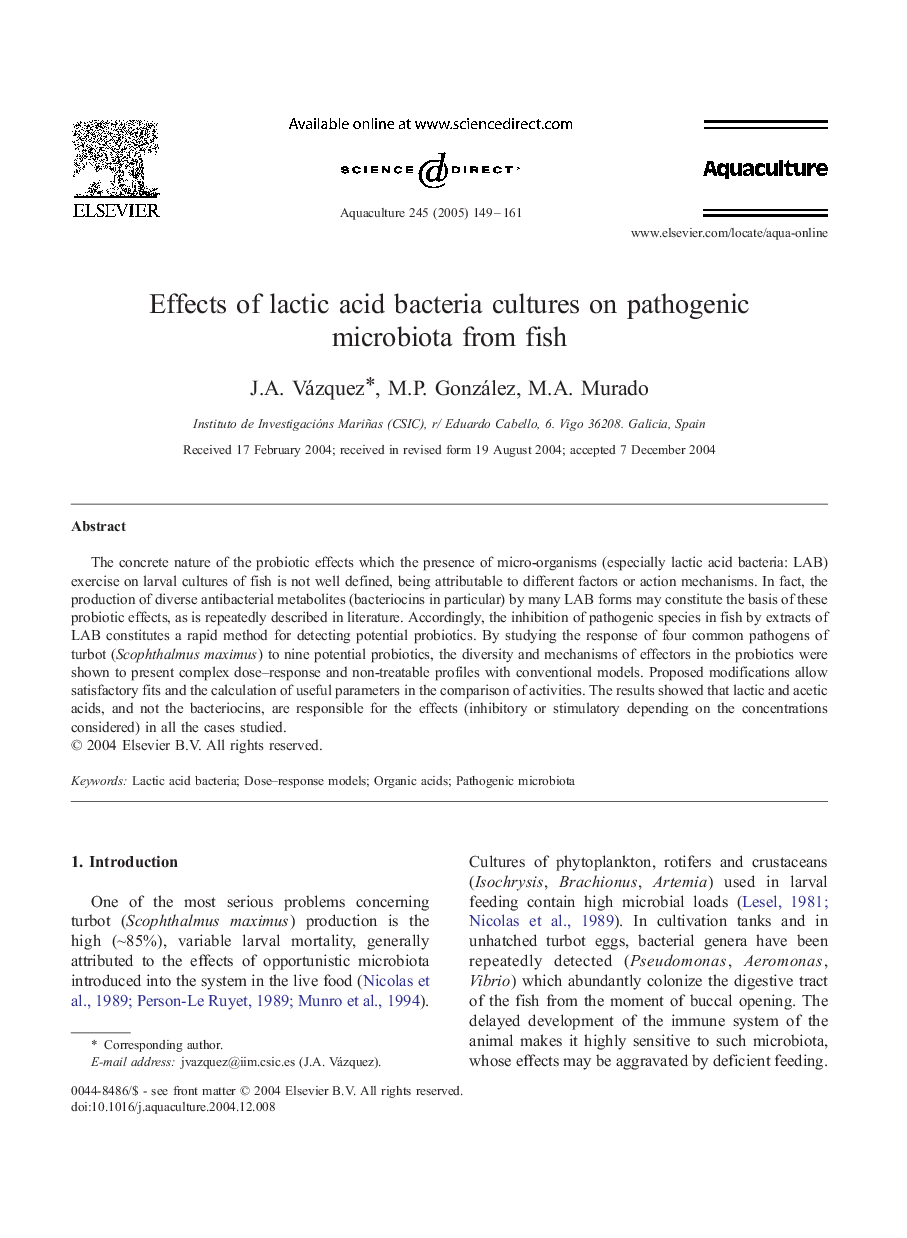| Article ID | Journal | Published Year | Pages | File Type |
|---|---|---|---|---|
| 8974784 | Aquaculture | 2005 | 13 Pages |
Abstract
The concrete nature of the probiotic effects which the presence of micro-organisms (especially lactic acid bacteria: LAB) exercise on larval cultures of fish is not well defined, being attributable to different factors or action mechanisms. In fact, the production of diverse antibacterial metabolites (bacteriocins in particular) by many LAB forms may constitute the basis of these probiotic effects, as is repeatedly described in literature. Accordingly, the inhibition of pathogenic species in fish by extracts of LAB constitutes a rapid method for detecting potential probiotics. By studying the response of four common pathogens of turbot (Scophthalmus maximus) to nine potential probiotics, the diversity and mechanisms of effectors in the probiotics were shown to present complex dose-response and non-treatable profiles with conventional models. Proposed modifications allow satisfactory fits and the calculation of useful parameters in the comparison of activities. The results showed that lactic and acetic acids, and not the bacteriocins, are responsible for the effects (inhibitory or stimulatory depending on the concentrations considered) in all the cases studied.
Related Topics
Life Sciences
Agricultural and Biological Sciences
Aquatic Science
Authors
J.A. Vázquez, M.P. González, M.A. Murado,
